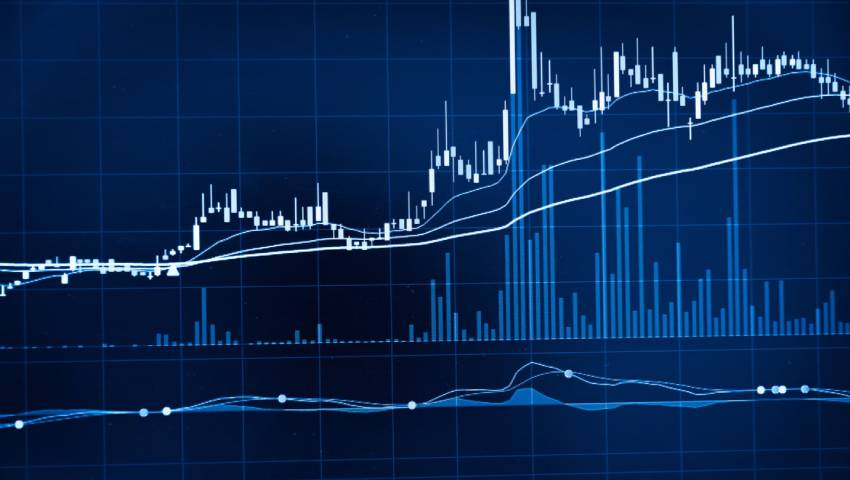
- 09/10/2024
- MyFinanceGyan
- 200 Views
- 5 Likes
- Investment, Share Market
What is Technical Analysis?
Technical analysis is a method of evaluating statistical trends in trading activity, typically involving price movement and volume. It is used to identify trading and investment opportunities.
Unlike fundamental analysis, which attempts to evaluate a security’s value based on financial information such as sales and earnings, technical analysis focuses on price and volume to draw conclusions about future price movements.
Technical analysis is used to evaluate price trends and patterns and thereby identify potential investments and trading opportunities. Technical analysts believe past trading activity and a security’s price changes can be valuable indicators of the security’s future price movements. Technical analysis may be contrasted with fundamental analysis, which focuses on a company’s financials rather than historical price patterns or stock trends. Technical analysis was introduced by Charles Dow.
Understanding Technical Analysis :
Technical analysis is used to scrutinize the ways supply and demand for a security affect changes in price, volume, and implied volatility. It assumes that past trading activity and price changes of a security can be valuable indicators of the security’s future price movements when paired with appropriate investing or trading rules.
Technical analysis’ various charting tools are often used to generate short-term trading signals. They can also help improve the evaluation of a security’s strength or weakness relative to the broader market or one of its sectors. This information helps analysts improve their overall valuation estimate.
Technical analysis as we know it today was first introduced by Charles Dow as the Dow Theory in the late 1800s.1 Several noteworthy researchers including William P. Hamilton, Robert Rhea, Edson Gould, and John Magee further contributed to Dow Theory concepts. Nowadays, technical analysis has evolved to include hundreds of patterns and signals developed through years of research.
How Technical Analysis Is Used ?
Professional analysts often use technical analysis in conjunction with other forms of research. Retail traders may make decisions based solely on the price charts of a security and similar statistics. But practicing equity analysts rarely limit their research to fundamental or technical analysis alone.
Technical analysis can be applied to any security with historical trading data. This includes stocks, futures, commodities, fixed-income securities, currencies, and more. In fact, technical analysis is prevalent in commodities and forex markets where traders focus on short-term price movements.
Technical analysis attempts to forecast the price movement of virtually any tradable instrument that is generally subject to forces of supply and demand. Some view technical analysis as simply the supply and demand forces reflected by the market price movements of a security.
Technical analysis most commonly applies to price changes, but some analysts track numbers other than just price, such as trading volume or open interest figures.
Technical Analysis Indicators:
Hundreds of patterns and signals have been developed by researchers to support technical analysis trading. Technical analysts have also developed numerous types of trading systems to help them forecast and trade on price movements.
Some indicators focus primarily on identifying the current market trend, including support and resistance areas. Others focus on determining the strength of a trend and the likelihood of its continuation.
Commonly used technical indicators and charting patterns include trendlines, channels, moving averages, and momentum indicators.
technical analysts look at the following broad types of indicators:
- Price trends
- Chart patterns
- Volume and momentum indicators
- Oscillators
- Moving averages
- Support and resistance levels
three general assumptions:
- The market discounts everything: Technical analysts believe that everything from a company’s fundamentals to broad market factors to market psychology is already priced into a stock. The Efficient Markets Hypothesis (EMH) draws a similar conclusion about prices. The only thing remaining is the analysis of price movements, which technical analysts view as the product of supply and demand for a particular stock.
- Price moves in trends: Technical analysts expect that prices, even in random market movements, will exhibit trends regardless of the time frame being observed. In other words, a stock price is more likely to continue a past trend than to move erratically. Most technical trading strategies are based on this assumption.
- History tends to repeat itself: The repetitive nature of price movements is often attributed to market psychology, which tends to be very predictable and based on emotions such as fear and excitement. Technical analysis uses chart patterns to analyze these emotions and subsequent price movements to understand trends. While many forms of technical analysis have been used for more than 100 years, they are believed to be relevant still because they illustrate patterns in price movements that often repeat themselves.
Limitations of Technical Analysis :
- For some analysts and academic researchers, the EMH demonstrates why no actionable information is contained in historical price and volume data. However, by the same reasoning, nor should business fundamentals provide actionable information. These points of view are known as the weak form and semi-strong form of the EMH.
- Another criticism of technical analysis is that history does not repeat itself exactly, so price pattern study is of dubious importance and can be ignored. Prices seem to be better modeled as a random walk.
- A third criticism of technical analysis is that it works in some cases but only because it constitutes a self-fulfilling prophecy. For example, many technical traders will place a stop-loss order below the 200-day moving average of a certain company.
If a large number of traders have done so and the stock reaches this price, there will be a large number of sell orders, which will push the stock price down, confirming the movement traders anticipated.
Then, other traders will see the price decrease and sell their positions, reinforcing the strength of the trend. This short-term selling pressure can be considered self-fulfilling, but it will have little bearing on where the asset’s price will be weeks or months from now.
In sum, if enough people use the same signals, they could cause the movement foretold by the signal. However, over the long run, this sole group of traders cannot drive the price.
Please note,
The views in the article/blog are personal and that of the author. The idea is to create awareness and for educational purpose and not intended to provide any product recommendations.



